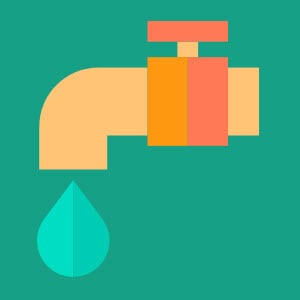The dripping faucet. The leaky toilet. The long, hot showers after a hard day of work.
These things have one thing in common…
…They use unnecessary water.
The world has more people than it did 100 years ago. Food and water consumption always increases when the population rises, obviously.
Until the last 30 years or so, the idea of wasting water was not wide-spread.
Some people, who were concerned with our environment, understood the necessity of conserving water, while the majority didn’t ever think they were wasting it.
Those researchers and conservationists have now educated a lot of countries and now it is apparent more water is needed, and, as individuals and communities, a difference can be made.
There are a variety of things you can do, no matter what type of life you live, to cut back on water.
What’s in it for you?
Lower water bills.
A remarkable contribution to our world.
Assess Your Water Fixtures
You may not have thought the kitchen faucet dripping was a big deal. However, each drip adds up, and a consistently dripping faucet could use more than a dozen gallons of water a day.
Leaks can end up wasting a lot of water. Check your faucets and showers first. Then, check your toilets.
QUICK TIP:
Put a little food coloring in your toilet tank. If the color is in the toilet bowl within 30 minutes, you should fix the leak immediately.
Pay attention to your water meter, or your water bill. If you aren’t sure what your bill should look like, search to see what your neighbors are paying. It doesn’t take long to do a quick search online.
Make Repairs – Maintain Fixtures
Home maintenance is key for saving water and cutting back on water costs.
After you’ve assessed your home, it is time to spend some money to make these repairs and cut back on water.
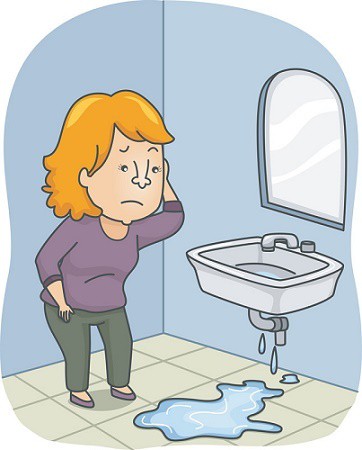
Buying parts and taking time to make repairs is often why projects like these are set aside. For a lot of projects, especially tricky plumbing projects, it is better to hire an expert.
When you try to do some yourself, (unless you have experience and are really competent) you risk breaking something bigger, possibly causing a water leak or breaking a pipe.
QUICK TIP:
Pick one project at a time. Fix the toilet handles. Those parts are inexpensive and begin the process of water conservation. Do what works best for you. If you are capable of doing one clean sweep and making repairs, then, by all means, do it!
Home Upgrades
The difference between repairs and upgrades? Repairs are needed for something you already own.
Upgrading is usually pretty expensive and requires you to buy brand new things to make your home better.
There is a range of prices for upgrades that involves saving water. Just like repairs, it takes money to save money.
In this regard, it may take longer than you like to see how you are saving money when you’ve already seen saving water.
Here are some suggestions:
1. Shower-heads
Purchase and install water-saving shower-heads, slow flowing faucets, and if your budget allows, a toilet that has two flushing options: one for urination and one for bowel movements.
2. Tank bank
Invest in a “tank bank.”
This is a really easy way to save water. It’s a little pouch-like contraption. You fill them up with water, close them, and hang them inside the tank.
A normal tank uses about 3 gallons to run smoothly. This lets the toilet work with less water each flush.
OR:
Make a contraption like this at home. Take a soda bottle or something similar, put a few pebbles in it to make it sink, and put it in your tank.
3. Your washer
The next time you need to replace your washer, don’t just opt for the energy saver model, opt for the water saving model in addition.
4. Insulation
Insulate your water pipes. Why? Because it won’t take as long to heat up your water and you won’t let the water run until it is warm.
Daily Conservation
Hopefully, making repairs and upgrades are once in a decade or so projects. However, there are many things you can do daily that will cutback as well.
Although you will see a quick drop in water usage after repairs or upgrades, you won’t necessarily see a significant drop from these daily actions. Don’t count them out though; they will add up.
If you have a water meter or good records of your water bills, try to figure out water usage and cost for the year before you get started. At the end of 6 months and a year, calculate the difference.
Here’s the deal:
Don’t waste while you wash!
Turn the water off while you brush your teeth. This might be one of the most common water-conservation tips. If you brush the recommended 2 minutes and you left the water running, you would lose a lot of water.
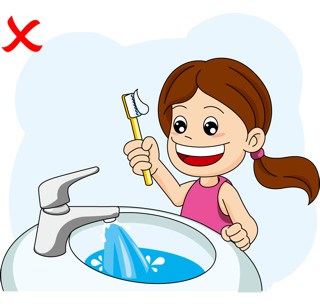
Turn the water off when you wash your hands. This is similar to washing your teeth. You don’t need to let the water run. Health organizations suggest you wash with hot water, but you don’t want to keep your water running.
What do you do?
You insulate your pipes so they get the water warmer faster. It is also OK to wash your hands in cold water every once in a while.
If you hand wash your dishes, try filling the sink up with soapy water instead of letting the water flow.
Wait until the dishwasher and laundry are completely full before running them. You will get more bang for your buck, and in this case, water.
Take shorter showers. This can be really hard for some people who relax in the shower. For some people, it is their only downtime for themselves in their hectic life.
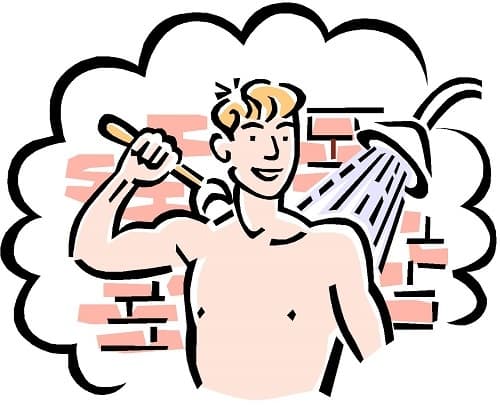
Think about this:
There are billions of people in this world who have no access to running water, and may only know what a shower is from missionaries or travelers. They survive without it. Show empathy for those people. Cut back on your shower. Save water.
Cut back on unnecessary usage:
Keep a gallon of water in the fridge. If you usually drink from your tap, you probably let your faucet run until the water is coolest. By having it already in the fridge, you don’t have to let the faucet run unless you are filling the jug up.
Don’t leave the hose running when washing your car, or – go somewhere that recycles water that will wash your car for you. You don’t want to just think about cutting back on your water, but about water everywhere you go.
Yard Conservation
If you are thirsty just from going outside, it is probable that your grass, trees, and plants are thirsty too.
Regions can go weeks without rain. Those dry times call for more watering. This can become excessive; especially if you are particular about the way your yard looks.

Water in the early part of the day. Not at dusk, but later. The water will be less likely to evaporate because it won’t be the hottest part of the day. Watering in the dead heat of the afternoon can also “shock” the flowers.
Use a watering can instead of a hose for your plants and flowers. This is true especially if your hose leaks. The water isn’t running. This method of watering may take longer, but there will be less water used and wasted, and you can get more of your daily steps in. More action for you; less water wasted.
Use mulch or ground cover. Mulch and other natural components, like tree bark from your yard or a bit of your compost, will stop the water from evaporating quickly, thus reducing the amount of water needed to help your garden flourish. Bonus: It also keeps the weeds out.
Give the grass a good soaking. Don’t just sprinkle water on the grass. Let it soak in deep so the water can get to the roots, and the root system can grow deeper in the ground, making it more likely to survive the harsh sun and hot days.
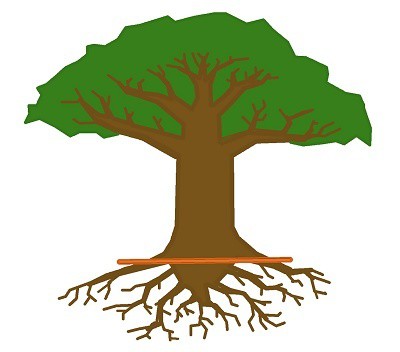
Install a rain barrel. There are many ways to do this. Some people have intricate systems, hooked up to the gutters and a hose. Some people just have a barrel to catch the water and then distribute to a watering can. These can be purchased or made with a few materials.
Eliminate the yard altogether. This probably is unlikely, but there are other ways to “landscape” without living greenery.
Things You May Have Not Thought Of
Be open-minded when you read these unusual tips and tricks. They may be too extreme for your lifestyle, but they may be ones that you easily adapt to.
1. Shower bucket
Put a bucket near the drain of your shower. Then use the water in the bucket that has accumulated from the shower, to water pants or to mop the floor.
2. Pasta water
Reuse your pasta water. Don’t judge! You don’t need to drink it or use it for more cooking. Try using it for your houseplants.
3. Skip showers
Instead of taking two showers a day, take one, or alternate days of when you shower. There are many health benefits to not showering. Often, it allows for more moisture in your hair and skin.
It lets your natural oils do what they are supposed to. I know it is hard to think about, but it is possible. Maybe take one less shower on the weekend.
4. Your meat
Don’t thaw your meat with the water from the sink.
Instead of using the microwave, some people have tried to slowly thaw their meats (and other frozen foods) by running water over packaged meat and letting it soak.
Plan your meals and remove the meat from the freezer earlier.
Or use the microwave. It will make your cooking easier.
5. Pets
Wash your pets outside. Combine their “baths” with watering the plants.
Just like when you are brushing your teeth or washing your hands, turn the hose off unless you are directly using it.
6. Your toilet
Don’t flush stuff.
Make sure you don’t use the toilet for other trash, like facial tissue, bugs, cigarette butts, sanitary products, etc. More water is needed to push those products down. If they get stuck and need another flush to get them down, that is more water.
If the toilet needs to be plunged, that multiplies the number of water needed to get rid of something you could have just put in a wastebasket.
The bottom line:
There are so many ways to conserve water that you can start anywhere.
Give yourself a reason to do the repairs you’ve been avoiding. Go shopping to get new appliances and do your part in making the world a more sustainable place.
Stop letting the water run whenever you think about it. Trust that you will begin to think more and more about how you can save water once you start.
Let yourself be part of something bigger. Make an individual difference and be part of a big movement: save water!
